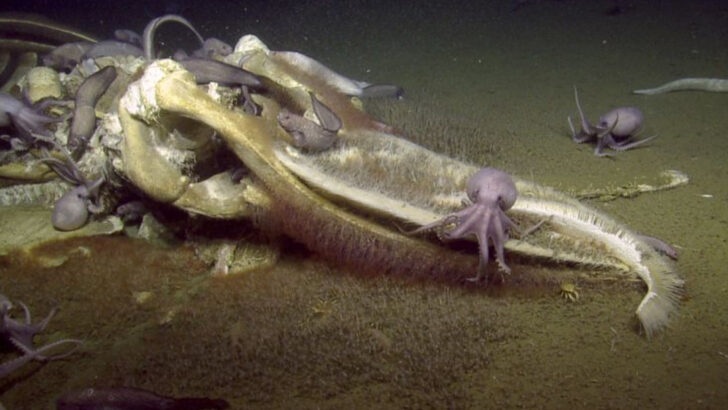A whale’s death is not the end — it’s the start of one of the ocean’s most jaw-dropping mysteries. When a giant whale sinks to the ocean floor, it becomes a bustling city for sea creatures few have ever seen. Scavengers swarm, tearing into the flesh, while tiny creatures move in to feast on what’s left. But the real magic? The whale’s bones become a banquet of nutrients, supporting strange life that thrives only in this dark, deep world. This hidden cycle can last for decades, turning a single death into a source of life and wonder beneath the waves. Get ready to dive deep into the ocean’s secret story — where loss sparks life, and nature’s most incredible recycling takes center stage.
Stage 1: The Descent
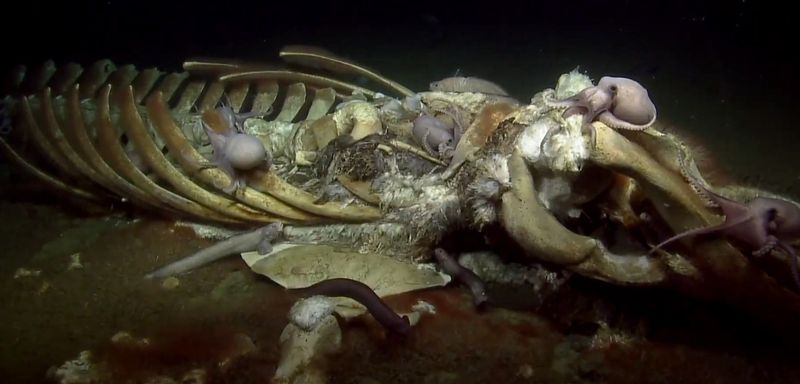
A whale’s death marks the beginning of its journey to the ocean floor. The enormous body gradually descends, creating a spectacle of shadows and light. This descent alone attracts various ocean dwellers. As the whale sinks, it becomes a beacon for the sea’s scavengers. The spectacle of such a massive creature falling to the abyss is both mesmerizing and ominous. It’s a silent procession that draws an audience of curious sharks and fish. This initial stage plays a crucial role in announcing the arrival of a new, temporary ecosystem.
Stage 2: The Scavenger Feast
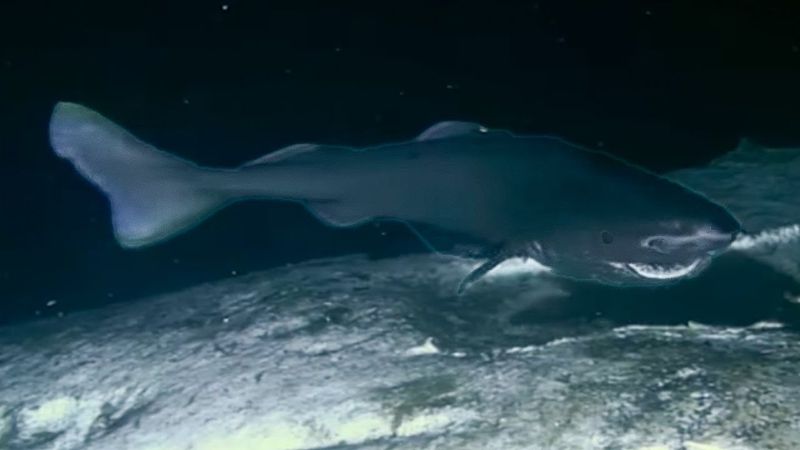
Upon reaching the seafloor, the whale carcass becomes a feast for scavengers. Sharks and hagfish are usually the first to arrive, stripping away the soft tissues. The frenzy is a chaotic dance of feeding. These scavengers play a vital role in this ecological cycle by quickly breaking down the whale’s body. The feeding frenzy is a testament to nature’s efficiency. Within days, only the whale’s skeleton remains, marking the end of the scavenger feast. This rapid consumption phase is essential for the cycle’s progression.
Stage 3: The Arrival of Smaller Creatures
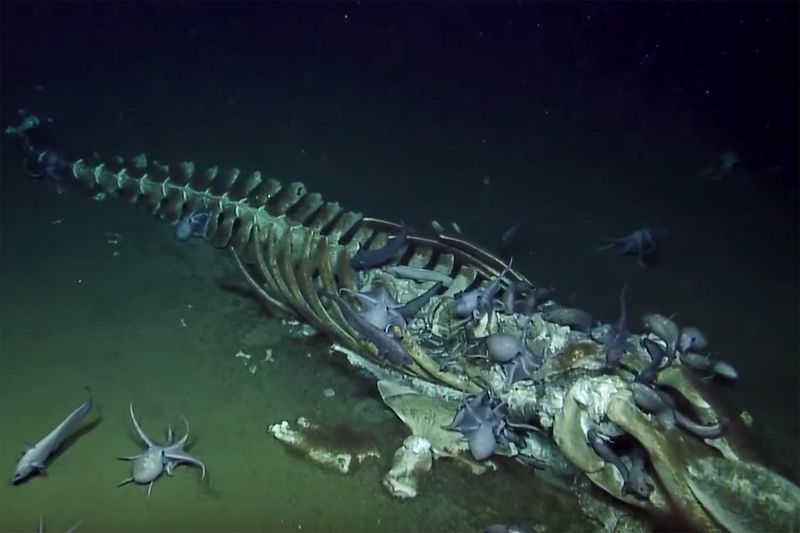
Once the scavengers have had their fill, smaller creatures take their turn. Worms, crustaceans, and other invertebrates colonize the remains. This stage introduces a slower, methodical breakdown of the whale’s body. These smaller organisms meticulously consume the remaining tissues and fats. This phase can last for months, sustaining a community of diverse species. The gradual decomposition by these creatures further enriches the surrounding sediment. The intricate interplay of these organisms highlights the complexity of this underwater cycle.
Stage 4: Bacterial Colonization
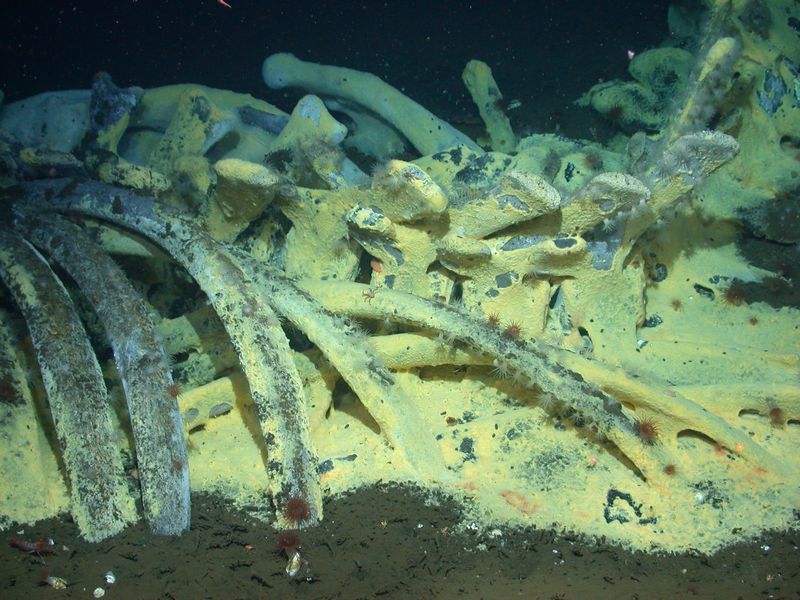
The whale’s bones become a hotspot for bacterial colonization. These bacteria break down the lipids within the bones, releasing nutrients. This unseen process is vital for sustaining life in the deep sea. The nutrients released support a unique community of organisms adapted to these conditions. Bacterial activity transforms the whale skeleton into a bustling micro-ecosystem. This transformation is a testament to life’s adaptability in extreme environments. This deep-sea phenomenon underscores the importance of microbial life in ecological cycles.
Stage 5: Unique Ecosystems Emerge
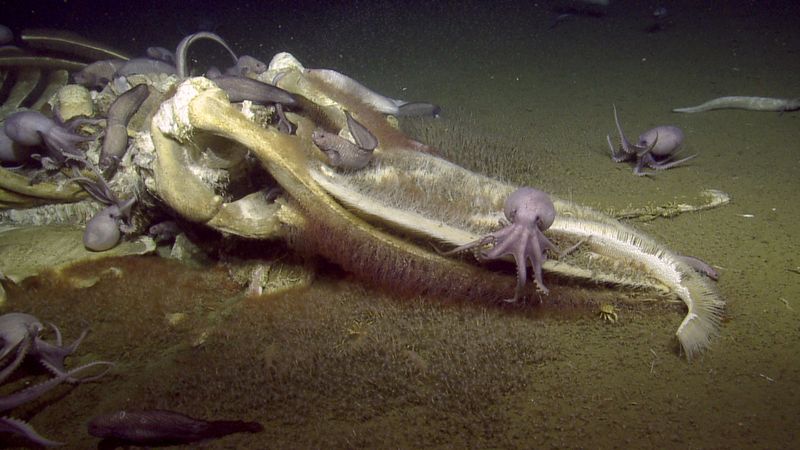
As bacteria flourish, unique ecosystems start to develop. Rare and unusual deep-sea creatures find a haven around the whale fall. Bioluminescent bacteria illuminate this underwater world, creating a surreal scene. These creatures are specifically adapted to thrive in this nutrient-rich, oxygen-poor environment. The whale fall becomes a refuge for creatures like zombie worms and sleeper sharks. This stage reveals the ocean’s hidden diversity and resilience. These thriving ecosystems emphasize the interconnectedness of life in the ocean’s depths.
Stage 6: Long-Term Nutrient Source
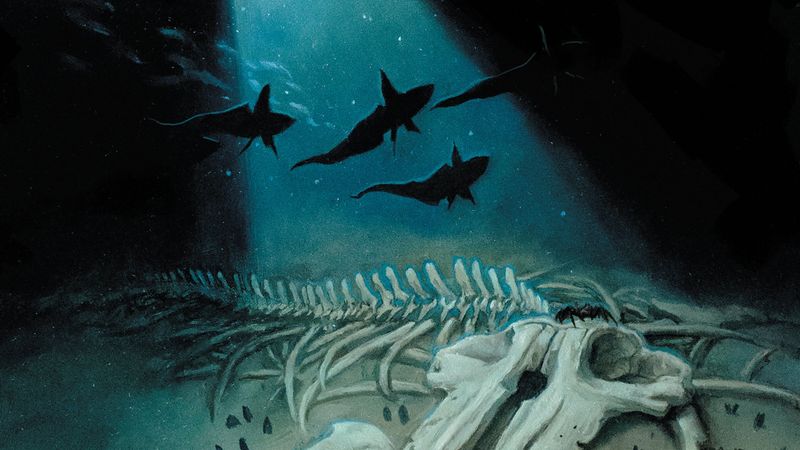
The whale skeleton continues to provide nutrients long after its flesh is gone. This lasting contribution supports marine life for years, even decades. Nutrients leach into the seafloor, enriching the surrounding habitat. This extended nutrient source fosters long-term ecological balance. The presence of the whale skeleton helps sustain a web of life that depends on this rare bounty. This stage exemplifies the slow, enduring impact of a single whale’s death. It’s a testament to the cycle of life and the ocean’s capacity for renewal.
Stage 7: The Cycle Continues
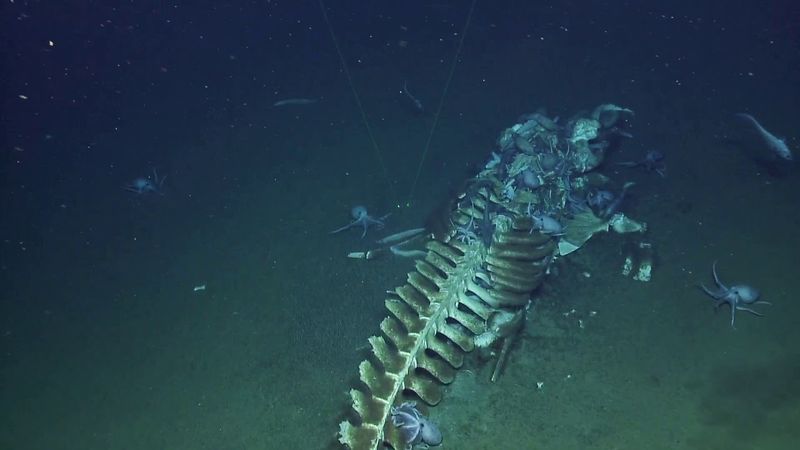
Eventually, the remnants of the whale skeleton are absorbed back into the ocean floor. This absorption marks the conclusion of the whale fall. It signifies the seamless integration of the whale’s remains into the marine ecosystem. The cycle of life continues, with each whale fall contributing to the ocean’s biodiversity. This ongoing process highlights the ocean’s ability to recycle and renew itself. The whale fall serves as a profound reminder of nature’s continuity and resilience. It symbolizes the endless cycle of life and death beneath the waves.

